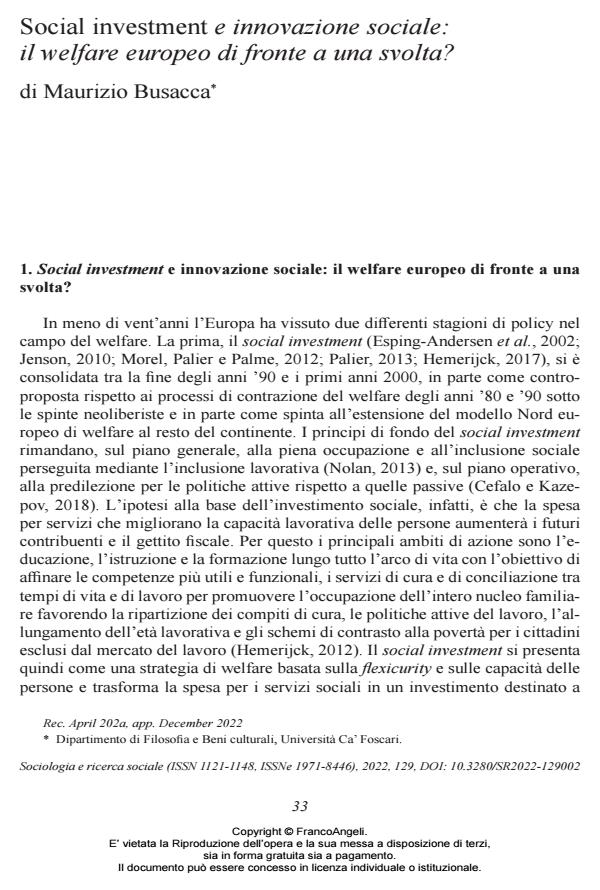Social investment e innovazione sociale: il welfare europeo di fronte a una svolta?
Journal title SOCIOLOGIA E RICERCA SOCIALE
Author/s Maurizio Busacca
Publishing Year 2023 Issue 2022/129
Language English Pages 30 P. 33-62 File size 286 KB
DOI 10.3280/SR2022-129002
DOI is like a bar code for intellectual property: to have more infomation
click here
Below, you can see the article first page
If you want to buy this article in PDF format, you can do it, following the instructions to buy download credits

FrancoAngeli is member of Publishers International Linking Association, Inc (PILA), a not-for-profit association which run the CrossRef service enabling links to and from online scholarly content.
Maurizio Busacca, Social investment e innovazione sociale: il welfare europeo di fronte a una svolta? in "SOCIOLOGIA E RICERCA SOCIALE " 129/2022, pp 33-62, DOI: 10.3280/SR2022-129002